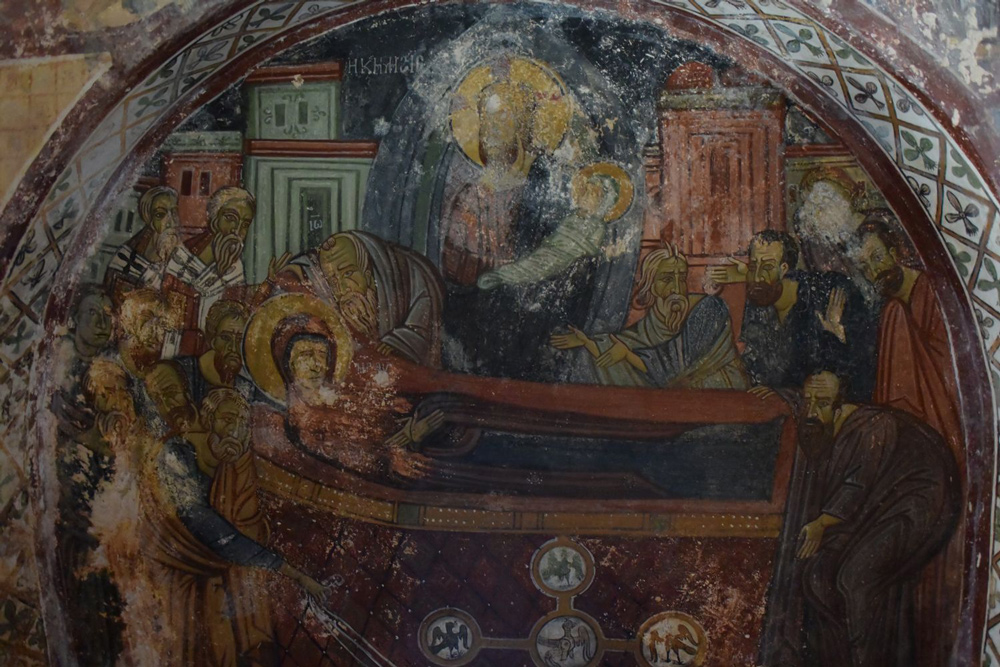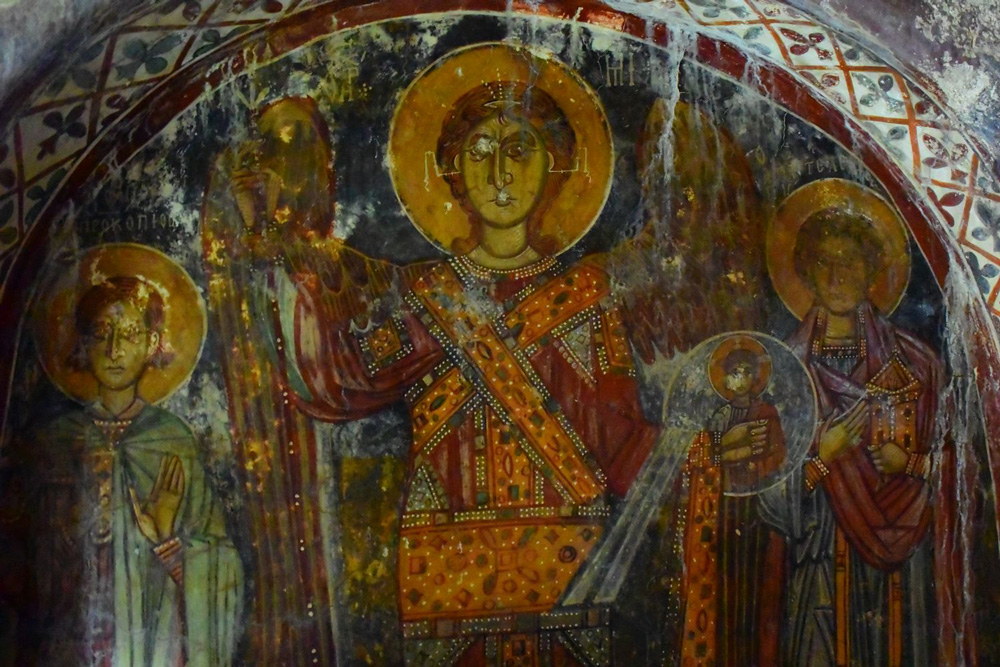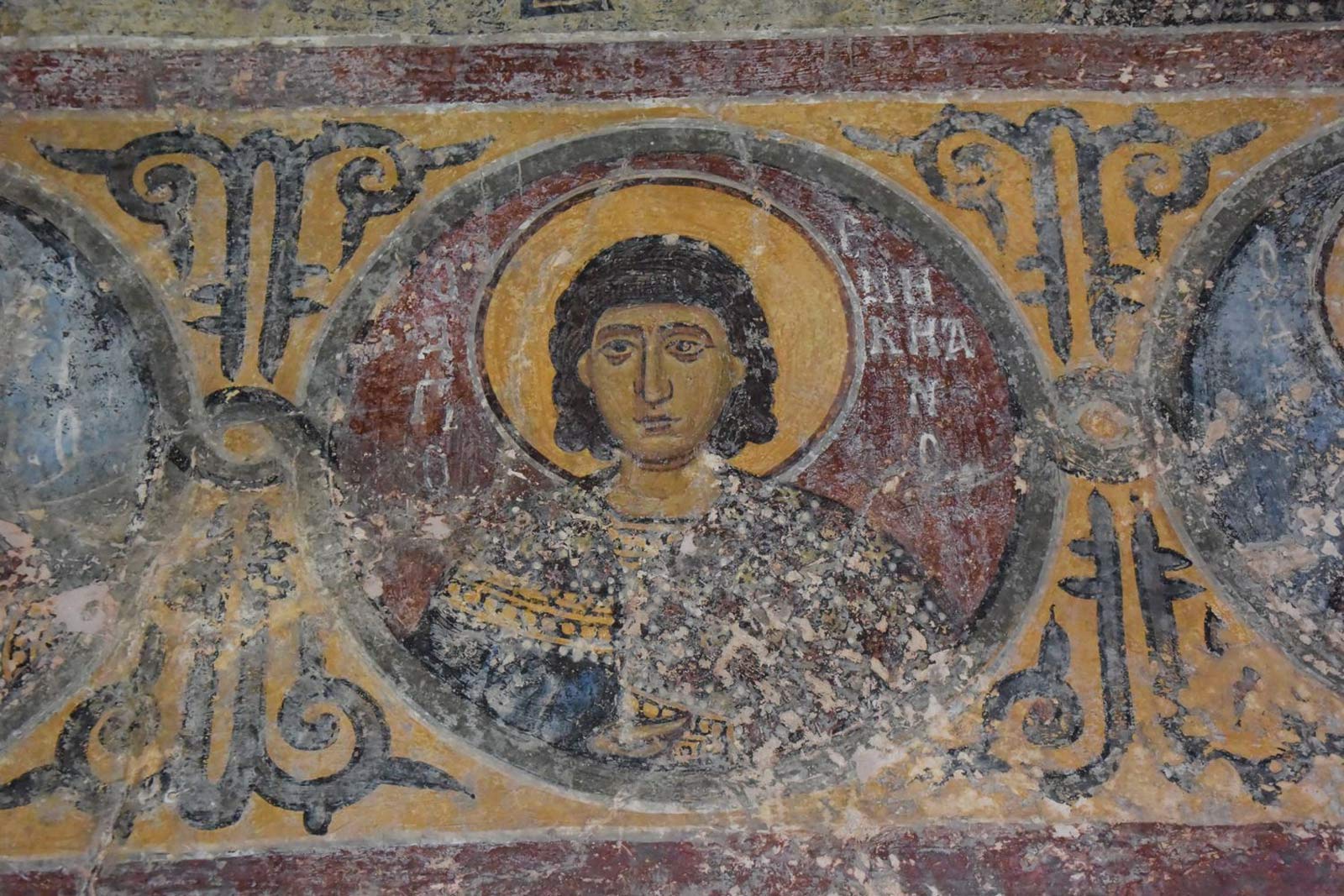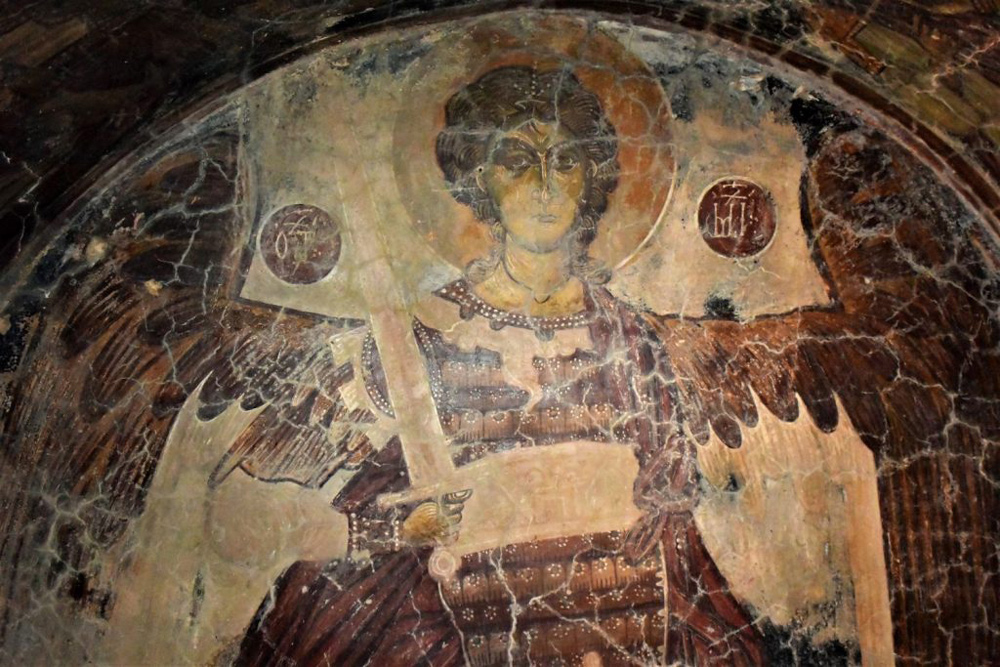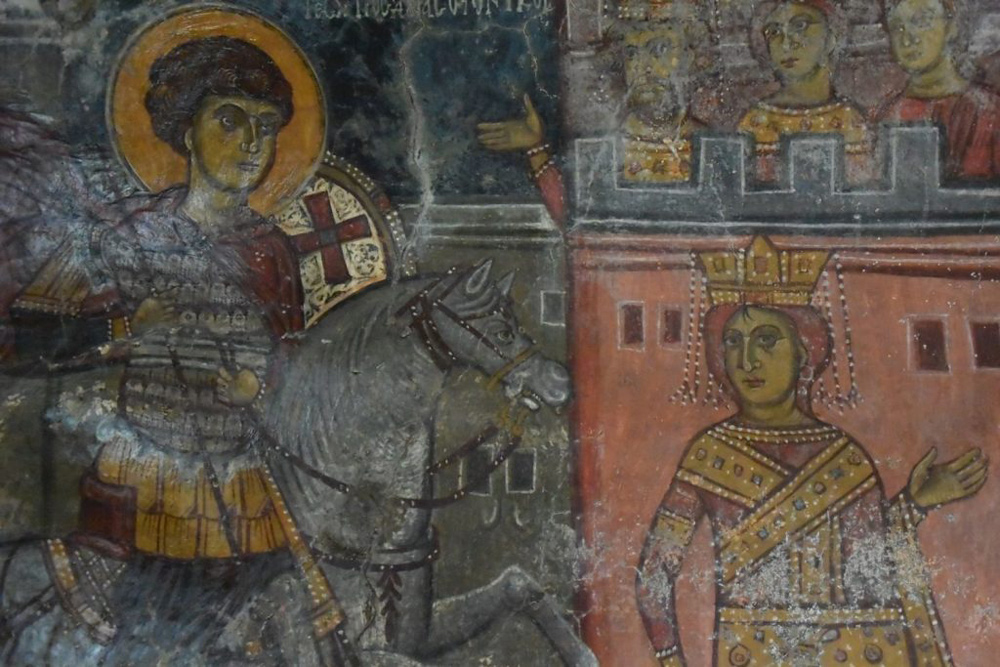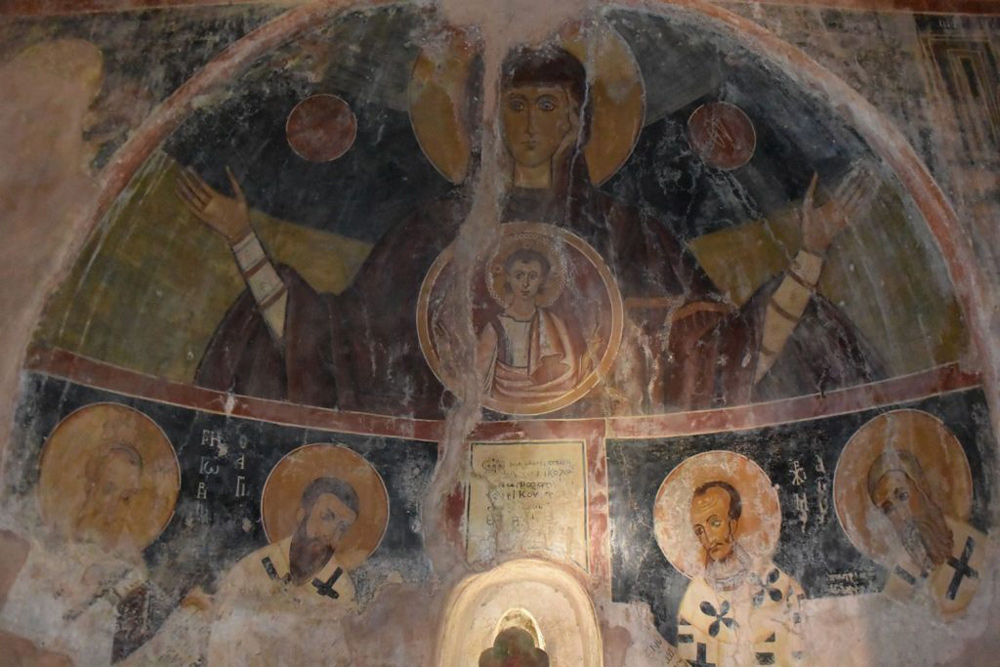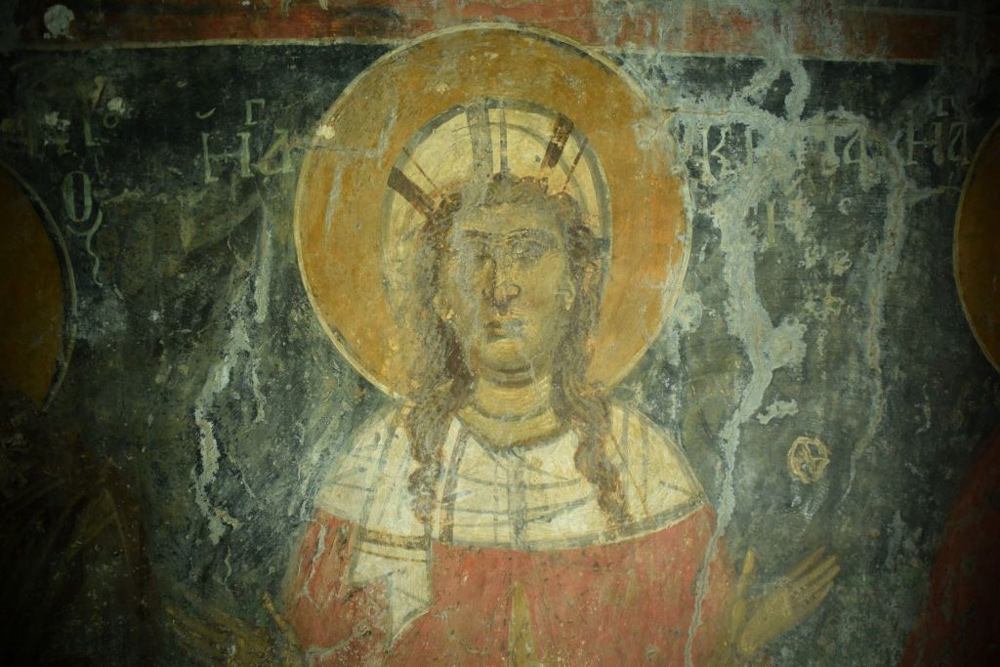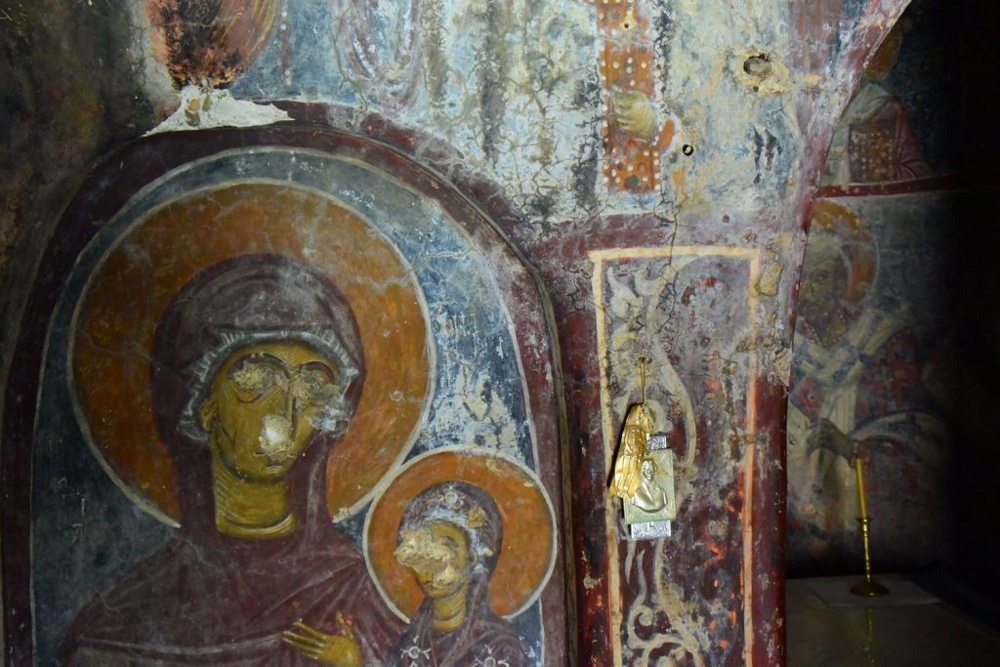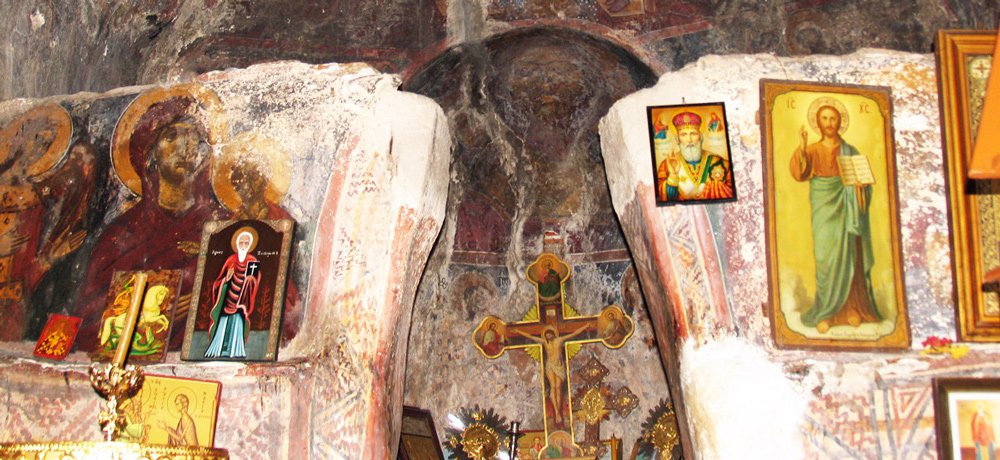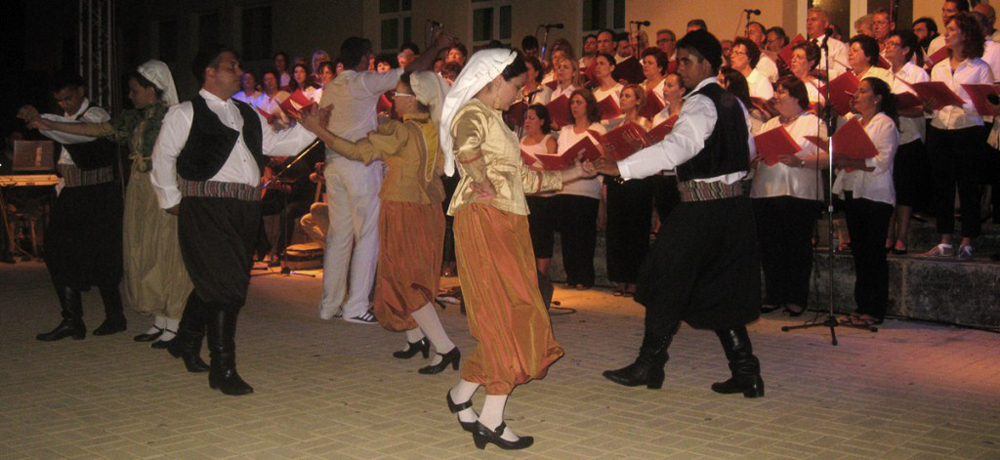The byzantine church of Panagia Skafidiani (Virgin Mary of Skafidia) is located next to the mountain village of Prodromi, Chania, about 12 km from Paleochora. The small, white church is located on the right side of the road shortly before entering the village, on an elevated position with magnificent views of the surrounding area, which is called “Skafidia”. The exceptional hagiography murals you find inside the church were painted in the mid-14th century by Ioakim, a student of the famous hagiographer of the time Ioannis Pagomenos. The most important hagiographies inside the church depict the Treason (the kiss of Judas), the Assumption of Virgin Mary, and the Baptism of Christ by John. The Saints Constantine and Helen are also portrayed, with Saint Paraskevi beside them.
VIEW MAP
